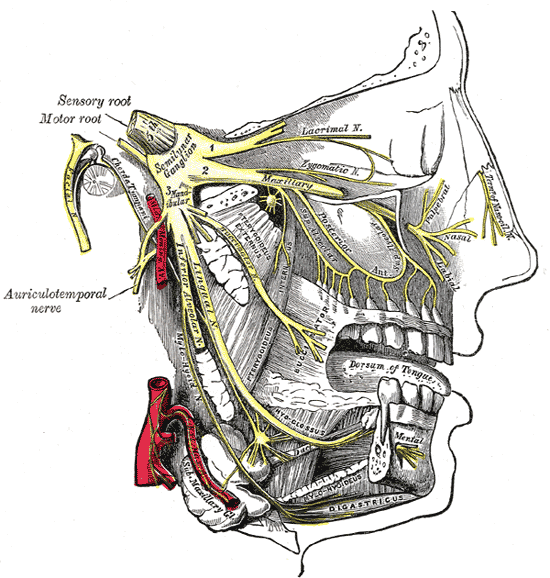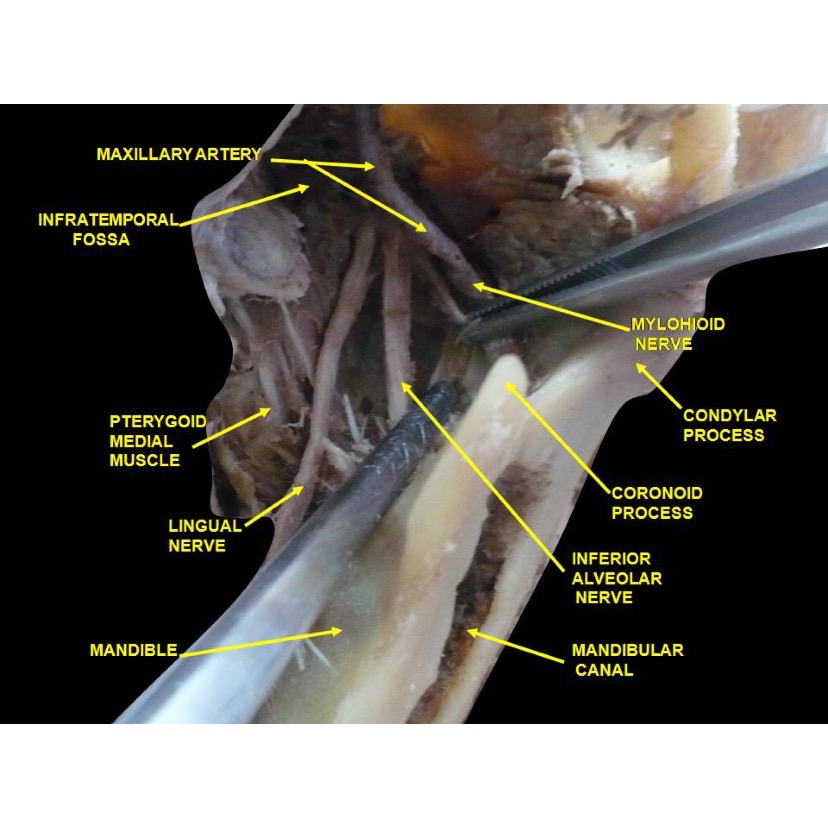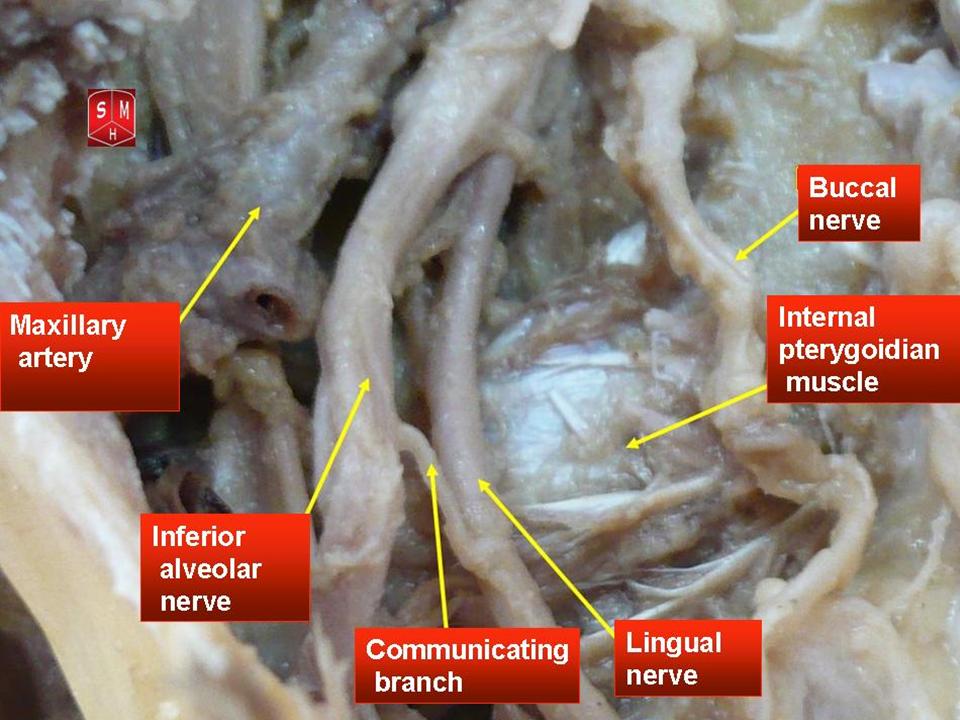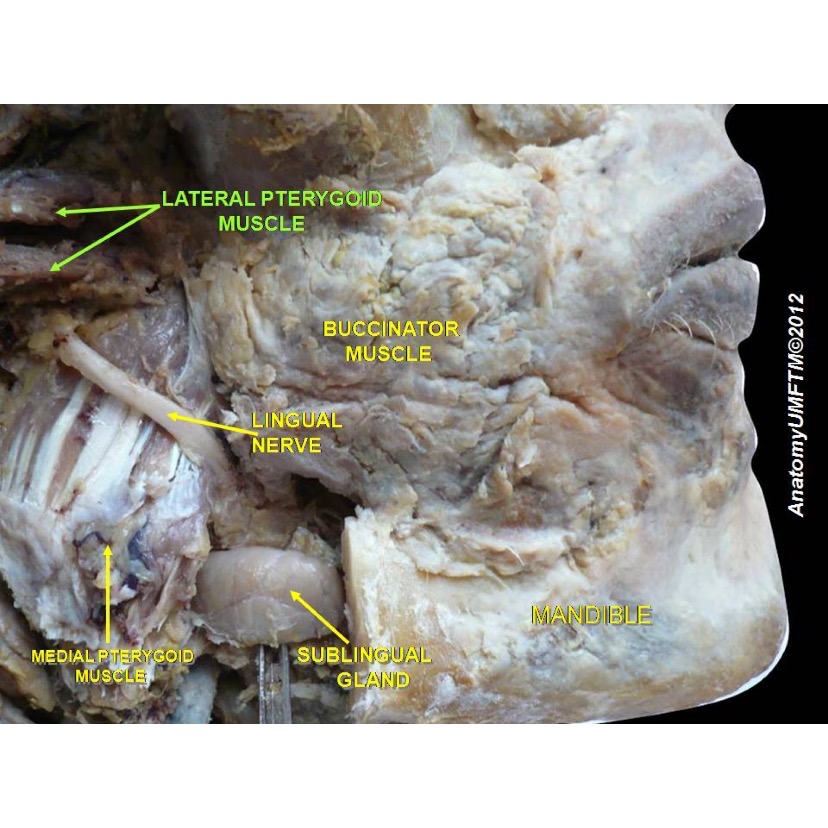[1]
Kikuta S, Iwanaga J, Kusukawa J, Tubbs RS. An anatomical study of the lingual nerve in the lower third molar area. Anatomy & cell biology. 2019 Jun:52(2):140-142. doi: 10.5115/acb.2019.52.2.140. Epub 2019 Jun 30
[PubMed PMID: 31338230]
[2]
Al-Amery SM, Nambiar P, Naidu M, Ngeow WC. Variation in Lingual Nerve Course: A Human Cadaveric Study. PloS one. 2016:11(9):e0162773. doi: 10.1371/journal.pone.0162773. Epub 2016 Sep 23
[PubMed PMID: 27662622]
[3]
Benninger B, Kloenne J, Horn JL. Clinical anatomy of the lingual nerve and identification with ultrasonography. The British journal of oral & maxillofacial surgery. 2013 Sep:51(6):541-4. doi: 10.1016/j.bjoms.2012.10.014. Epub 2012 Nov 23
[PubMed PMID: 23182453]
[4]
Shimoo Y, Yamamoto M, Suzuki M, Yamauchi M, Kaketa A, Kasahara M, Serikawa M, Kitamura K, Matsunaga S, Abe S. Anatomic and Histological Study of Lingual Nerve and Its Clinical Implications. The Bulletin of Tokyo Dental College. 2017:58(2):95-101. doi: 10.2209/tdcpublication.2016-0010. Epub
[PubMed PMID: 28724864]
[5]
Takezawa K, Kageyama I. Nerve fiber analysis on the morphology of the lingual nerve. Anatomical science international. 2015 Sep:90(4):298-302. doi: 10.1007/s12565-014-0267-5. Epub 2014 Dec 3
[PubMed PMID: 25467528]
[6]
Zhan C, Yuan Z, Qu R, Zou L, He S, Li Z, Liu C, Xiao Z, Ouyang J, Dai J. Should we pay attention to the aberrant nerve communication between the lingual and mylohyoid nerves? The British journal of oral & maxillofacial surgery. 2019 May:57(4):317-322. doi: 10.1016/j.bjoms.2019.03.003. Epub 2019 Mar 30
[PubMed PMID: 30940405]
[7]
Dias GJ, de Silva RK, Shah T, Sim E, Song N, Colombage S, Cornwall J. Multivariate assessment of site of lingual nerve. The British journal of oral & maxillofacial surgery. 2015 Apr:53(4):347-51. doi: 10.1016/j.bjoms.2015.01.011. Epub 2015 Feb 7
[PubMed PMID: 25662169]
[8]
Pippi R, Spota A, Santoro M. Prevention of Lingual Nerve Injury in Third Molar Surgery: Literature Review. Journal of oral and maxillofacial surgery : official journal of the American Association of Oral and Maxillofacial Surgeons. 2017 May:75(5):890-900. doi: 10.1016/j.joms.2016.12.040. Epub 2017 Jan 4
[PubMed PMID: 28142010]
[9]
Ozdamar OI, Uzun L, Acar GO, Tekin M, Kokten N, Celik S. Risk Factors for Lingual Nerve Injury Associated With Suspension Laryngoscopy. The Annals of otology, rhinology, and laryngology. 2019 Jul:128(7):633-639. doi: 10.1177/0003489419835854. Epub 2019 Mar 6
[PubMed PMID: 30841712]
[10]
Sittitavornwong S, Babston M, Denson D, Zehren S, Friend J. Clinical Anatomy of the Lingual Nerve: A Review. Journal of oral and maxillofacial surgery : official journal of the American Association of Oral and Maxillofacial Surgeons. 2017 May:75(5):926.e1-926.e9. doi: 10.1016/j.joms.2017.01.009. Epub 2017 Jan 18
[PubMed PMID: 28189657]
[11]
Chiapasco M, De Cicco L, Marrone G. Side effects and complications associated with third molar surgery. Oral surgery, oral medicine, and oral pathology. 1993 Oct:76(4):412-20
[PubMed PMID: 8233418]
[12]
Middlehurst RJ, Barker GR, Rood JP. Postoperative morbidity with mandibular third molar surgery: a comparison of two techniques. Journal of oral and maxillofacial surgery : official journal of the American Association of Oral and Maxillofacial Surgeons. 1988 Jun:46(6):474-6
[PubMed PMID: 3164052]
[13]
Shepherd JP. Lingual nerve retraction increases the risk of temporary lingual nerve damage during mandibular third molar surgery. Evidence-based dentistry. 2006:7(2):47
[PubMed PMID: 16858382]
[14]
Tan VL, Andrawos A, Ghabriel MN, Townsend GC. Applied anatomy of the lingual nerve: relevance to dental anaesthesia. Archives of oral biology. 2014 Mar:59(3):324-35. doi: 10.1016/j.archoralbio.2013.12.002. Epub 2013 Dec 12
[PubMed PMID: 24581856]
[15]
Chossegros C, Guyot L, Cheynet F, Belloni D, Blanc JL. Is lingual nerve protection necessary for lower third molar germectomy? A prospective study of 300 procedures. International journal of oral and maxillofacial surgery. 2002 Dec:31(6):620-4
[PubMed PMID: 12521318]
[16]
Shintani Y, Nakanishi T, Ueda M, Mizobata N, Tojyo I, Fujita S. Comparison of Subjective and Objective Assessments of Neurosensory Function after Lingual Nerve Repair. Medical principles and practice : international journal of the Kuwait University, Health Science Centre. 2019:28(3):231-235. doi: 10.1159/000497610. Epub 2019 Feb 6
[PubMed PMID: 30726857]
[17]
Balasubramanian S, Paneerselvam E, Guruprasad T, Pathumai M, Abraham S, Krishnakumar Raja VB. Efficacy of Exclusive Lingual Nerve Block versus Conventional Inferior Alveolar Nerve Block in Achieving Lingual Soft-tissue Anesthesia. Annals of maxillofacial surgery. 2017 Jul-Dec:7(2):250-255. doi: 10.4103/ams.ams_65_17. Epub
[PubMed PMID: 29264294]
[18]
Piagkou M, Demesticha T, Piagkos G, Georgios A, Panagiotis S. Lingual nerve entrapment in muscular and osseous structures. International journal of oral science. 2010 Dec:2(4):181-9. doi: 10.4248/IJOS10063. Epub
[PubMed PMID: 21404967]
[19]
Rittich AB, Ellrich J, Said Yekta-Michael S. Assessment of lingual nerve functions after smoking cessation. Acta odontologica Scandinavica. 2017 Jul:75(5):338-344. doi: 10.1080/00016357.2017.1308551. Epub 2017 Apr 3
[PubMed PMID: 28372503]
[20]
Garisto GA, Gaffen AS, Lawrence HP, Tenenbaum HC, Haas DA. Occurrence of paresthesia after dental local anesthetic administration in the United States. Journal of the American Dental Association (1939). 2010 Jul:141(7):836-44
[PubMed PMID: 20592403]
[21]
Khoury J, Mihailidis S, Ghabriel M, Townsend G. Anatomical relationships within the human pterygomandibular space: Relevance to local anesthesia. Clinical anatomy (New York, N.Y.). 2010 Nov:23(8):936-44. doi: 10.1002/ca.21047. Epub
[PubMed PMID: 20949494]
[22]
Ogle OE, Mahjoubi G. Local anesthesia: agents, techniques, and complications. Dental clinics of North America. 2012 Jan:56(1):133-48, ix. doi: 10.1016/j.cden.2011.08.003. Epub
[PubMed PMID: 22117947]
[23]
Harn SD, Durham TM. Incidence of lingual nerve trauma and postinjection complications in conventional mandibular block anesthesia. Journal of the American Dental Association (1939). 1990 Oct:121(4):519-23
[PubMed PMID: 2212345]




